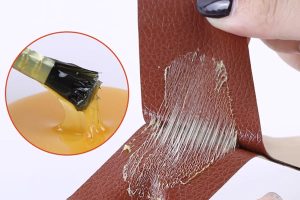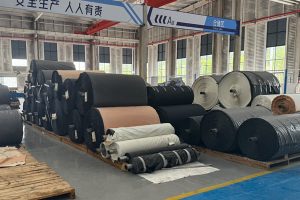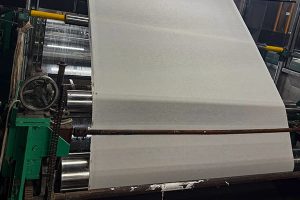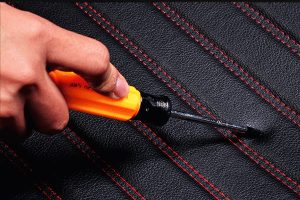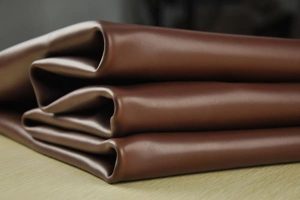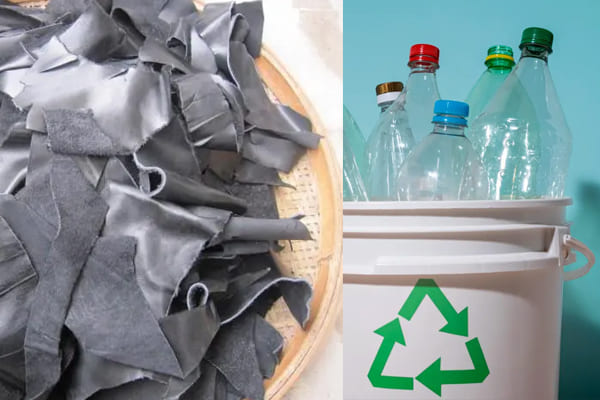
Picture this: you’re strolling through your favorite store, eyeing that sleek, leather jacket, and suddenly, you’re hit with a dilemma. On one hand, it’s stylish, durable, and smells oh-so-good. On the other hand, there’s that nagging voice reminding you about the environmental toll of traditional leather production. Enter recycled leather, strutting in like the eco-conscious superhero of the material world—repurposed scraps ready to save the planet, one stylish handbag at a time. But before you go singing its green praises, we need to ask: is this leather lookalike truly sustainable or just another fashion faux pas in disguise? Let’s dive into the nitty-gritty of recycled leather and find out if it’s the hero we’ve all been waiting for.
Recycled Leather: A Green Solution for Eco-Conscious Consumers?
Recycled leather has emerged as a promising alternative for consumers seeking eco-friendly options without compromising on quality or aesthetics. By repurposing leather scraps and offcuts that would otherwise end up in landfills, this material contributes to waste reduction and promotes a circular economy. The production of recycled leather uses significantly less water, energy, and chemicals compared to traditional leather tanning processes. For eco-conscious consumers, choosing recycled leather means aligning with sustainable practices while still enjoying the durability and style that leather products offer. However, it’s essential to evaluate the entire lifecycle of the product, from sourcing to disposal, to truly gauge its green credentials.
Sustainability of Recycled Leather: A Deeper Look
Delving into the sustainability of recycled leather reveals a complex, yet optimistic picture. Recycled leather is created by bonding leather fibers and offcuts with eco-friendly adhesives, which reduces the need for raw animal hides and minimizes the environmental burden of leather production. Compared to virgin leather, it has a much smaller carbon footprint, as it reuses existing materials. Additionally, the process conserves resources such as water and reduces the release of harmful chemicals like chromium into the environment. However, the sustainability of recycled leather depends heavily on the production methods and the materials used for bonding, which means not all recycled leather products are created equal. Ensuring transparency in manufacturing is key to understanding its true environmental impact.
Is Recycled Leather Truly Sustainable? Unveiling the Eco Impact
To determine whether recycled leather is truly sustainable, we must examine its environmental impact at every stage of its lifecycle. While recycling leather reduces waste and supports a circular economy, some recycled leather products may still involve the use of synthetic bonding agents that could negatively affect biodegradability. Additionally, the energy required to process and bind leather fibers may reduce its eco-friendly appeal compared to other sustainable materials like natural fibers or plant-based alternatives. Despite these concerns, recycled leather offers a viable step toward reducing reliance on virgin leather production, which is resource-intensive and often harmful to ecosystems. By supporting brands that prioritize ethical and environmentally sound production methods, consumers can help ensure recycled leather contributes to a more sustainable future.
Recycled Leather: Reducing Waste, Saving Resources
Recycled leather offers an innovative way to address the massive waste generated by the fashion and leather industries. By repurposing leather scraps, offcuts, and discarded products, recycled leather significantly reduces the need for new raw materials, lowering demand on natural resources such as water and land that are traditionally required for leather production. Additionally, recycling leather helps divert waste from landfills, where untreated leather can take years to decompose, releasing harmful chemicals in the process. By embracing recycled leather, manufacturers can contribute to a more circular economy, conserving valuable resources while reducing their environmental footprint.
Sustainable Fashion: Can Recycled Leather Lead the Way?
The fashion industry is increasingly seeking sustainable alternatives to traditional materials, and recycled leather is gaining attention as a viable option. With the growing consumer demand for eco-friendly products, recycled leather has the potential to become a leading material in sustainable fashion. It combines the durability and luxury of genuine leather with a lower environmental impact, making it an attractive choice for both brands and consumers. However, the scalability and accessibility of recycled leather remain challenges, as production processes can be complex and resource-intensive. Despite these hurdles, recycled leather has the promise to lead the way toward a more sustainable fashion future, especially when integrated with other eco-conscious practices such as responsible sourcing and reduced waste.
The Environmental Benefits of Recycled Leather: Myth or Reality?
The environmental benefits of recycled leather are often highlighted, but are they as impactful as they seem? While recycled leather does help reduce waste and lowers the demand for virgin materials, it is important to assess the full lifecycle of the product. Some recycled leather processes involve the use of synthetic binders or chemicals, which could offset its environmental advantages. Additionally, while it reduces leather waste, recycled leather production still requires energy and resources, meaning its sustainability impact depends largely on how it is produced and used. Therefore, while recycled leather presents clear environmental benefits compared to conventional leather, its actual sustainability depends on the practices used throughout its entire supply chain.
Conclusion: Recycled Leather – The Fashionable Green Step, but Watch Your Footing
Recycled leather may not be the perfect environmental knight in shining armor, but it’s certainly making some promising strides. It helps to tackle the massive waste problem in fashion, reduces the demand for virgin materials, and offers a lower-impact alternative to traditional leather production. Yet, as with all things, the devil is in the details. Not all recycled leather is created equal, and its sustainability depends on transparency in production methods and materials used. So, while recycled leather offers an exciting step towards a greener future, it’s not a magical solution. It’s more like a fashionable pair of eco-friendly shoes—you’ll look great walking in them, but it’s always good to keep an eye on where you’re stepping!


